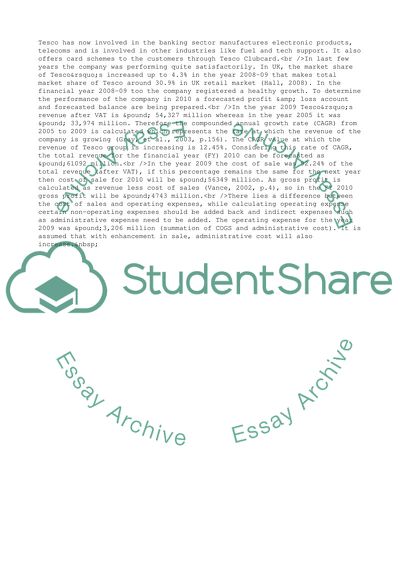Cite this document
(TESCO's Financial Forecasting Case Study Example | Topics and Well Written Essays - 1500 words - 1, n.d.)
TESCO's Financial Forecasting Case Study Example | Topics and Well Written Essays - 1500 words - 1. https://studentshare.org/business/1736198-financial-forecasting-tesco-plc
TESCO's Financial Forecasting Case Study Example | Topics and Well Written Essays - 1500 words - 1. https://studentshare.org/business/1736198-financial-forecasting-tesco-plc
(TESCO'S Financial Forecasting Case Study Example | Topics and Well Written Essays - 1500 Words - 1)
TESCO'S Financial Forecasting Case Study Example | Topics and Well Written Essays - 1500 Words - 1. https://studentshare.org/business/1736198-financial-forecasting-tesco-plc.
TESCO'S Financial Forecasting Case Study Example | Topics and Well Written Essays - 1500 Words - 1. https://studentshare.org/business/1736198-financial-forecasting-tesco-plc.
“TESCO'S Financial Forecasting Case Study Example | Topics and Well Written Essays - 1500 Words - 1”. https://studentshare.org/business/1736198-financial-forecasting-tesco-plc.


